About starch as wet granulation binder
Starch versatility as wet granulation binder: from conventional starch up to new functionalized modified starches
Introduction
Wet granulation (WG) is an important and frequent mandatory step in pharmaceutical manufacturing. Many reasons force to choose granulation, especially to reach content uniformity in tablets and capsules and to improve the workability of powders, e.g., for compression.
The use of binding polymers is helpful in most granulation cases. The limited solubility of the usual tablet excipients (filler/binder…) and the API(s) will not guarantee itself sufficient binding between particles when using water only. Polymers significantly improve the granulation process and the obtained granules. This could be measured by the granule properties themselves, e.g., the particle size distribution and the powder friability. However, more relevant are the possibilities to improve the tablet properties (less friability, higher tablet hardness). Numerous polymers serve as pharmaceutical WG binder today, varying on crucial properties, such as cold-water solubility, viscosity, and wetting capacity. A careful selection of the binder is recommended for matching all formulation and process needs. Especially new granulation technologies, such as a continuous wet granulation, might be very challenging for developing full binder activity within very short process times.
Binder choice and its evolution
Granular (potato) starch was one of the earliest excipients in tablet production in city-pharmacies or industry. Its use dates from at least the mid-19th century.Starch is considered as a versatile and cost-effective binder. It is therefore a widespread binder, also in modern pharmaceutical processing. However, starch is cold water insoluble. It needs a cooking process to “activate” the starch polymer prior to use. This procedure is frequently misunderstood. When not properly done, it could cause many troubles.
Consequently, pregelatinized starches were industrially developed in the middle of the last century. They are partially or completely soluble in cold water. Their use helps to avoid or limit the cooking process prior granulation. Modifying the cooking conditions is a way to modulate the binder properties to a certain extent.
However, the high viscosity of starch paste is an obstacle for some production routines, e.g., for spraying in fluidized airbed granulation. Therefore, a new generation of low viscous and cold water-soluble polymers found its place in the world of pharmaceutical excipients. The most popular and widespread are polyvinylpyrrolidone (PVP), modified cellulose and maltodextrins. These binders are considered as universal binders, fitting with all types of machines and formulations. However, they present completely different technical attributes, and their use could result in different tablet properties even with identical production routines:
- the tablet disintegration time and the API dissolution kinetic might vary between binders, caused by gelling & viscosity development of polymers in contact with water.
- rather hydrophobic APIs or excipients are not easily wetted/covered with very hydrophilic polymers and might therefore not fully become integrated in the granule structure. This results in friable granules and weak tablets.
- when using soluble polymers in powder form (mixing the polymer with the powders to granulate and add water to hydrate the polymer and liberate its binding power), these binders will not systematically express the same binding capacity, as when used in solution. The hydration will remain incomplete, resulting in lower binding capacity. This has been observed in high shear granulation, and this is now a top concern in continuous manufacturing. Recently developed for continuous granulation, new polymers, acting always at low liquid-solid ratios, are commercially available today.
The binder should therefore be carefully selected by considering the equipment constraints, the viscosity developed in solution or the wetting capacity of the powder to granulate. The applied water concentration could modify granules’ particle size distribution (PSD) and density. Considering process parameters, the choice of the production routines (e.g., high and low shear WG) will result in narrowing the number of suitable binders for a concrete formulation.
Granular starch
Granular starches are still popular WG binders, owing to their affordable price and their clear and natural label (appreciated in nutraceuticals and OTC). In addition, starch granules serve as disintegrant and glidant in many formulations, and their additional use as WG binder (in cooked form) limits the number of excipients. Typical use ratios as binder are 2-5% of the formulation. Starch particles own a crystalline structure, and they are therefore insoluble in cold water. When heating aqueous starch dispersion, the particles swell progressively by creating more and more hydro-dynamic viscosity. Until reaching the so-called gelatinization temperature, the starch particles remain insoluble. At this (insufficient) cooking stage, starch cannot act as binding polymer. The starch polymers (amylopectin and amylose) are not fully hydrated and remain bound in a crystalline structure. Only after the full gelatinization, at temperatures above the gelatinization temperature, starch reaches its full functionality as wet granulation binder.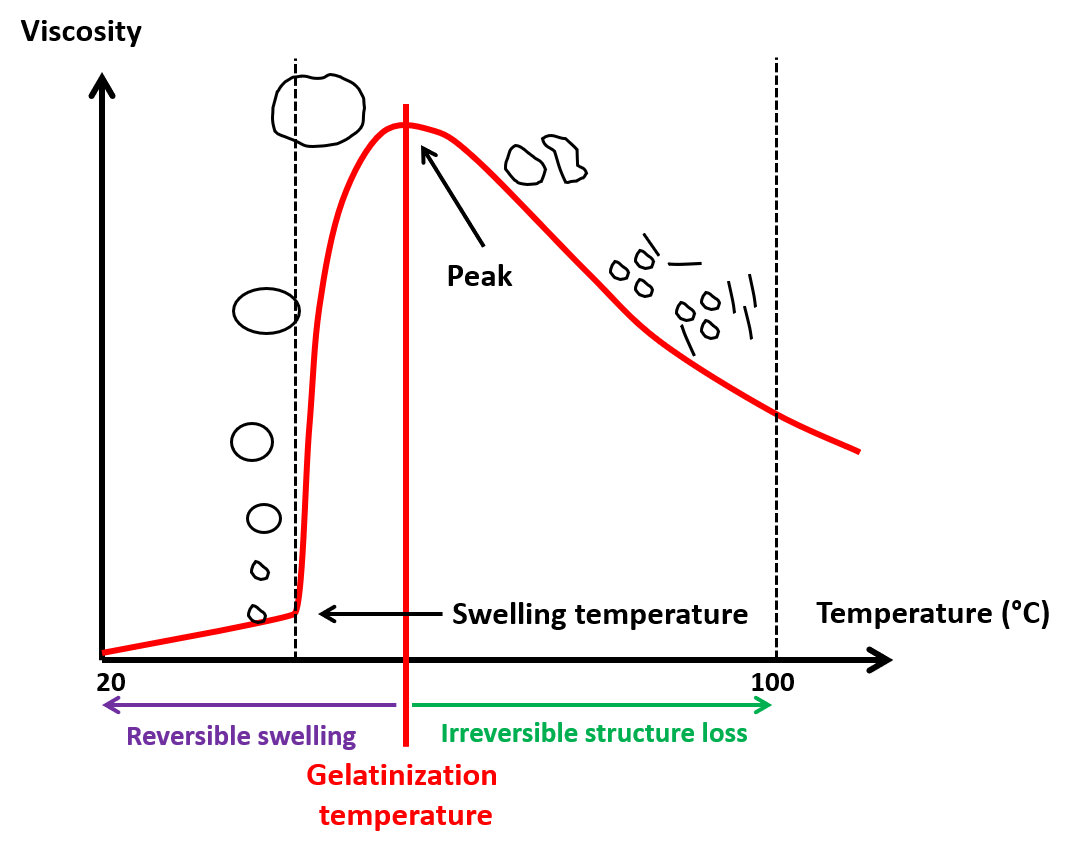
Figure 1. Starch paste cooking. Starch could only act as WG binder after its structure loss, this means above the so-called gelatinization temperature.
It is therefore mandatory to heat starch suspensions at least to temperatures 5°C to 10°C above the gelatinization temperature to obtain a homogenous and reproducible starch paste. Common industrial procedure is to cook the starch paste al dente; this means exactly at its theoretical gelatinization temperature (e.g., set with 71°C), with the initial idea to achieve binding capacity while keeping disintegrating properties with the same preparation. This is unrealistic. Fluctuations resulting from the process or from the starch itself will sooner or later cause severe production problems such as excessive tablet friability or in the opposite excessive viscosities, limiting its industrial use and increasing the tablet disintegration time and delaying the API dissolution. Some additional mechanical stress during the paste preparation facilitates the realization of an appropriate starch paste.
Only freshly prepared starch paste should be used due to its microbial and physical instability. Starch paste contains a few percent of starch, depending on the targeted viscosity (typical from 5% to 10% (w/w)). Note that potato starch gives higher viscosity than maize starch. There are also differences in the pasting properties comparing maize starch from European and from American origin, caused by different maize varieties used in agriculture. Each starch variety owns a specific and typical gelatinization temperature. Starch paste could be diluted with water for adjusting its viscosity, e.g., for spraying in fluidized airbed.
Pregelatinized starch
Pregelatinized starch is obtained from granular starch by an industrial cooking process, a thermal treatment (e.g., drum drying or extrusion) in presence of water. Such physical modification of the starch concerns both the amylose and the amylopectin fractions. Both will contribute to the binding capacities. Only soluble starch molecules could act as WG binder. Fully pregelatinized starches own therefore a higher intrinsic binding capacity than any partially pregelatinized starch, having a remaining part of the polymers into a non-dispersible crystalline structure.
Pregelatinized starch is at least partially soluble in cold water. This industrial process allows the adjustment of crucial binding properties such as the cold-water solubility. This might have an impact on the final granule properties so that not all pregelatinized starches are directly interchangeable.
LYCATAB® PGS is a fully pregelatinized starch from Roquette, having a limited cold-water solubility (cws) of about 10%, whereas typical pregelatinized starches are usually analysed with approximately 30% cws. This lower solubility does not impair its binding capacity, because the polymer is water dispersible and acts hence as binder. However, its lower solubility limits the formation of excessive viscosity during the tablet disintegration and shortens therefore the disintegration times. Figure 2 illustrates this viscosity effect on paracetamol tablets (82% paracetamol and 11% pregelatinized starch).
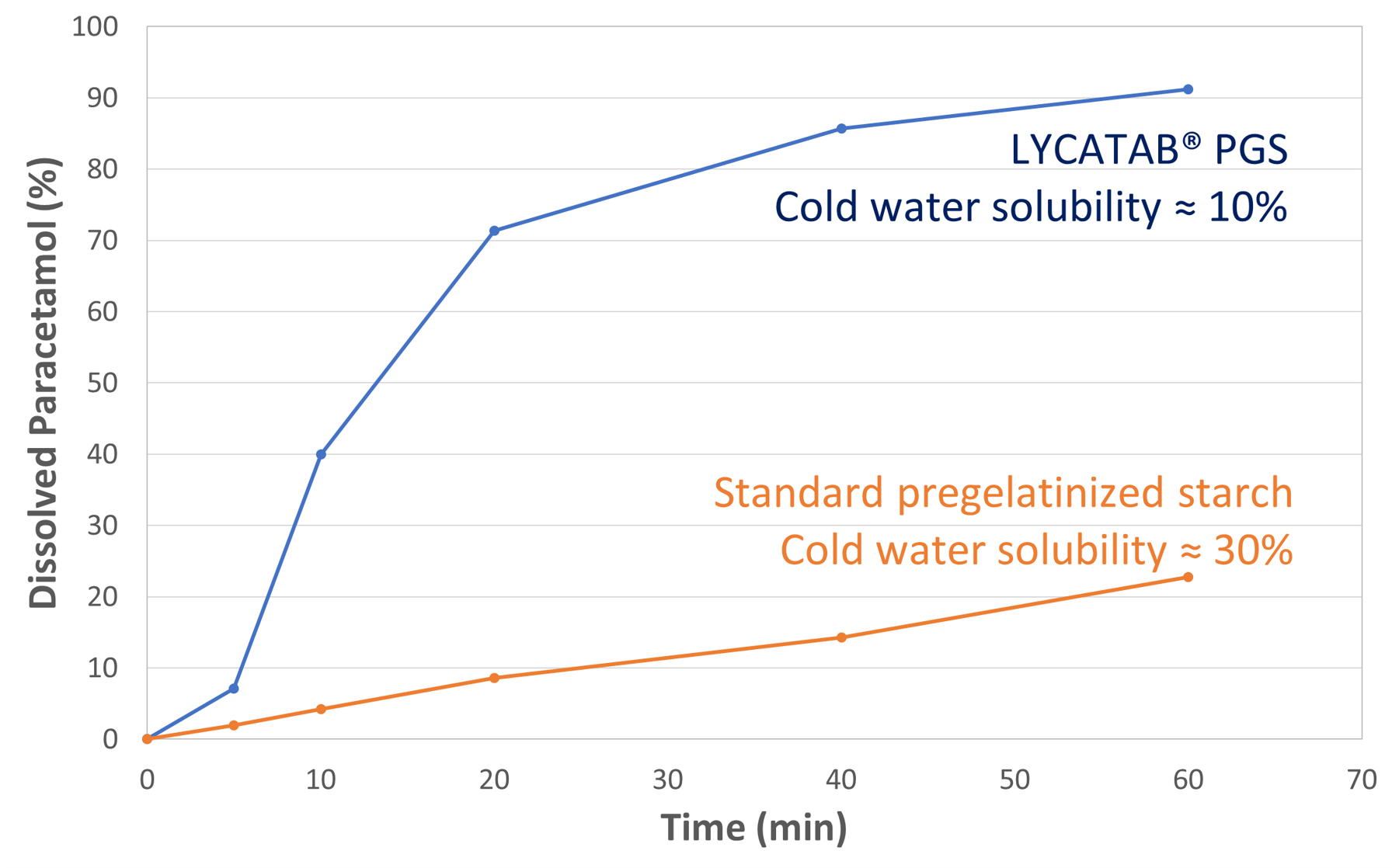
Figure 2. Impact of the starch solubility on the release kinetics of paracetamol from tablets made with LYCATAB® PGS vs. standard pregelatinized starch.
Pregelatinized starch is typically used in high shear equipment, frequently by incorporation as dry powder into the blend. The binder solution/dispersion is created in situ, by adding water during the process. The full hydration (and activation) of such starch needs time. Under specific process conditions (especially in continuous wet granulation, but also frequently seen in high shear single pot granulation) pregelatinized starch does not exhibit the same binding capacity as when added as a readily made solution. It is therefore also common to prepare starch paste by gentle heating of aqueous suspensions prior use. Doing so, by strict monitoring of the temperature, helps adjust the viscosity of the starch paste as well as its totally solubilized starch fraction.
Figure 3 shows the evolution of the viscosity of aqueous LYCATAB® PGS preparations when heating. Higher temperatures cause more starch solubilization (therefore viscosity increase) combined with the usual viscosity reduction of carbohydrate solutions.
Such preparations, with selected properties, fits for the use in fluidized airbed and in co-spraying for granulation. The choice between dry vs. wet binder addition should be done considering the whole process and formulation aspects. Dry binder addition requests higher binder ratios compared with its use as solution/dispersion for the same result (respectively between 3% and 15% for powder and 2% and 10% for liquid).
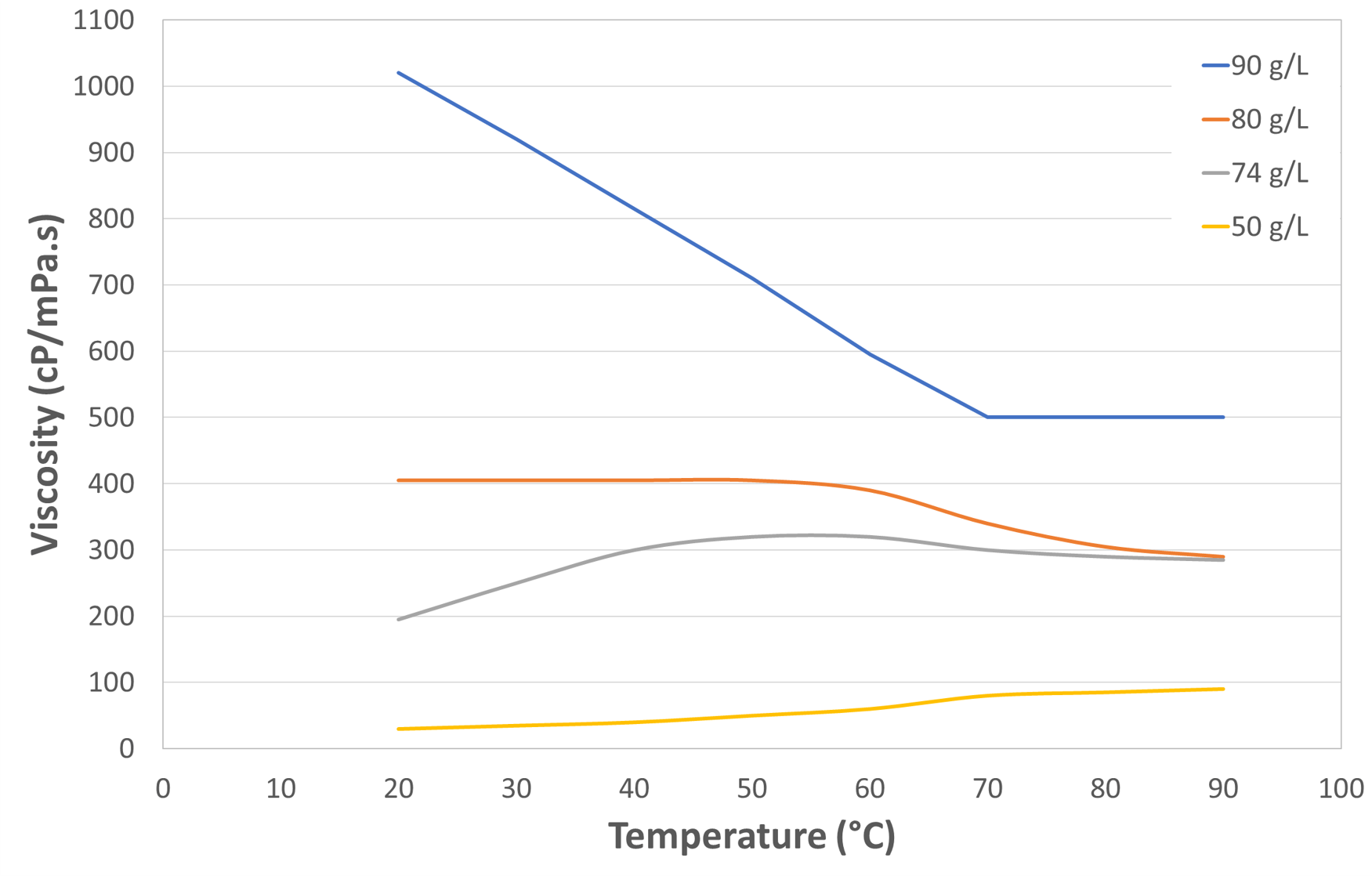
Figure 3. Viscosity of LYCATAB® PGS pregelatinized starch at different concentrations in aqueous solutions
Literature reports, that the use of (pregelatinized) starch results in tablets with less friability compared with those made with lower viscous polymers such as PVP or modified cellulose. Its optimal use concentration is in the lowest few percent of the total recipe. Employing higher quantities will no longer improve the granule properties, but could cause longer tablet disintegration / dissolution times.
Cold water-soluble starch polymers with reduced viscosity
Binding polymers with less viscosity are appreciated for reducing the droplet size during spraying, resulting usually in finer, less dense, and more homogenous granules. They help also to accelerate tablet disintegration while maintaining good tablet hardness and no friability. Their use helps simplify production processes. In some granulation processes, the use of such binder as dry powder is possible with no loss of binding capacity.
The starch hydrolysis with enzymes or mineral acid is a common approach for reducing the viscosity of the starch polymer. Fully cold-water soluble starch hydrolysis products without any further chemical modification are maltodextrins (chemically speaking), such as LYCATAB® DSH. They provide nice binding properties when having an appropriate hydrolysis level. These polymers, especially hydrophilic, are suitable for soluble excipients (e.g., mannitol) and could improve tableting results. On the other side, they are not the first choice for insoluble and notably for hydrophobic materials such as phosphates. Well-selected granulation process parameters (enhanced wetting or prolonged mixing time in high shear process) enable optimizing the granulation results.
Customization of the starch polymer with an additional chemical modification may be advantageous. This modification could be a hydroxypropylation (resulting, e.g., in Roquette’s products LYCOAT® RS 720 and RS 780) or an esterification for making sodium octenyl succinate starch (e.g., Roquette’s products CLEARGUM® CO 01 and CO 03). These modifications change the physical properties of the polymer. It improves crucial application characteristics such as hydration speed, wetting capacity but also physical stability in aqueous solution. Chemical modifications enhance the binder properties of starch and ease the industrial use (less maturation times in particular).
Modified starches guarantee good tablet hardness also when granules are not sufficiently dried or stored at higher relative humidities before use.
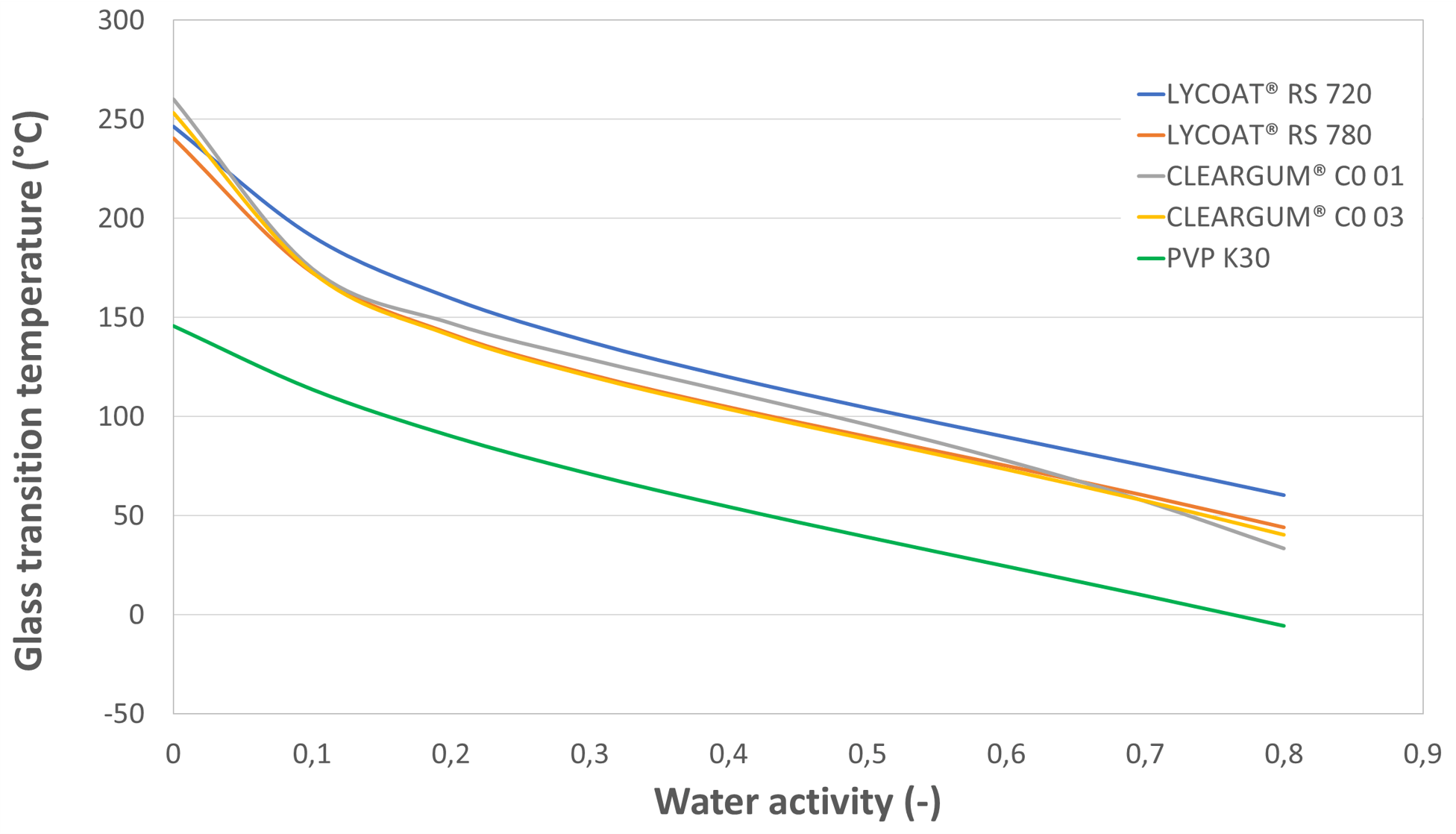
Figure 4. Glass temperatures of some polymers equilibrated at different relative humidities.
This rather constant application performance can be correlated with the glass temperature at humidity equilibrium. Starch derivatives have rather high glass temperatures, and they provide therefore homogenous performance in tableting (see figure 4).
LYCOAT® RS 720
Hydroxypropyl pea starch has been found to be a universal wet granulation binder, working under various application conditions. Especially appreciated are its rapid and complete hydration and its large working window at different liquid ratios. The obtained granules present good properties and give mechanically satisfying tablets over a wide range of use conditions. Due to the absence of any gelling in water contact unlike some other polymers, tablets and granules have a very high disintegration speed.
CLEARGUM® CO 01 / CO 03
Sodium octenyl succinate starches are widespread excipients in food and pharma use, typically as emulsifier due to their surfactant properties. Their strong reduction of the surface tension in aqueous solution and their high wetting capacity of hydrophobic / apolar surfaces make them very valuable binders for challenging formulations (e.g., with ibuprofen) without requesting any additional emulsifier to improve the wetting. Trials demonstrated also an important intrinsic auto-hydration capacity. Those starches are therefore perfectly suited for use as dry powder, especially with very low ratios of added wetting liquids.
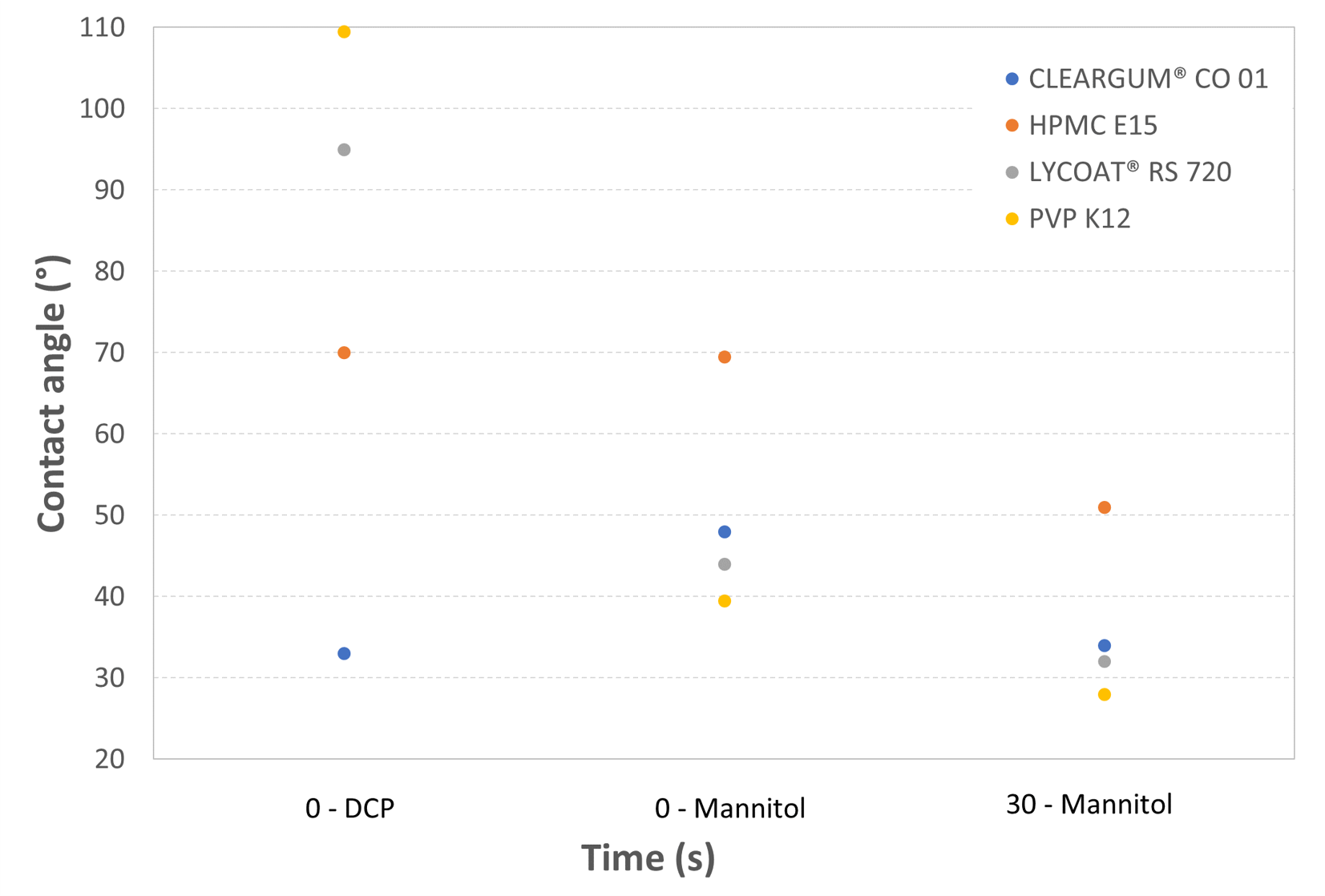
Figure 5. Excipient wetting with aqueous binder solutions (5% w/w) on tablets made with pure dicalcium phosphate (DCP) and mannitol, immediately (0 - DCP and 0 - Mannitol) and after 30s (30 - Mannitol)
Summary
Starch and starch derivatives are versatile polymers for the wet granulation process matching with all possible formulation and application constraints. Selected physical and/or chemical modification adapt it to all galenic use conditions. A careful binder selection and process optimization will result in the best possible granules and tablets.
New modified and cold-water soluble starches – as LYCOAT® RS or CLEARGUM® CO – present rapid complete hydration and high binding power, respectively for rather hydrophilic or hydrophobic powders, and are perfectly adapted to new manufacturing processes as continuous wet granulation.
Literature
Cantor S. L.. et al., Pharmaceutical Granulation Processes, Mechanism, and the Use of Binders, Chapter 8, June 2008,
https://doi.org/10.1201/b15115-9
Vandevivere, L. et al., Native starch as in situ binder for continuous twin screw wet granulation, International Journal of Pharmaceutics 571 (2019) 118760,
https://doi.org/10.1016/j.ijpharm.2019.118760
Symecko, C.W., Rhodes, C.T., The Effect of Compaction Force and Type of Pregelatinized Starch on the Dissolution of Acetaminophen, Drug Dev. and Ind. Pharm. 23(3) 1997 Pages 229-238,
https://doi.org/10.3109/03639049709149798
Becker, D; Rigassi R, Baur-Brandl, A., Effectiveness of binders in wet granulation: a comparison using model formulations of different tabletability, Drug Dev. and Ind. Pharm. 23(8) 791-7808 (1997)
https://doi.org/10.3109/03639049709150550
Soyeux, P. et al., Influence and optimisation of operating parameters with a new binder in wet granulation. I: use in powder form, Eur. J. of Pharm. and Biopharm. 01 Jul 1998, 46(1):95-103
https://doi.org/10.1016/s0939-6411(97)00162-8
Symecko, C.W., Romero A.J., Rhodes C.T., Comparative Evaluation of Two Pharmaceutical Binders in the Wet Granulation of Hydrochlorothiazide Lycatab™ Dsh Versus Kollidon® 30, Drug Development and Industrial Pharmacy 19(10):1131-1141, 2008
https://doi.org/10.3109/03639049309063007
Visavarungroj, N. Remon J.P., An Evaluation of Hydroxypropyl Starch as Disintegrant and Binder in Tablet Formulation, Drug Development and Industrial Pharmacy 17(10):2008 1389-1396
https://doi.org/10.3109/03639049109057304
Descamps, N., Le Bihan, G., Lefèvre, P., Haeusler, O., Use of octenyl-succinate starches as a binder in wet granulation, EP 3 819 336 A1, 2021
® Registered trademark(s) of Roquette Frères.
The information contained in this document is to the best of our knowledge true and accurate, but all instructions, recommendations or suggestions are made without any guarantee. Since the conditions of use are beyond our control, we disclaim any liability for loss and/or damage suffered from use of these data or suggestions. Furthermore, no liability is accepted if use of any product in accordance with these data or suggestions infringes any patent. No part of this document may be reproduced by any process without our prior written permission. For questions about a product’s compliance with additional countries’ standards not listed above, please contact your local Roquette representative.